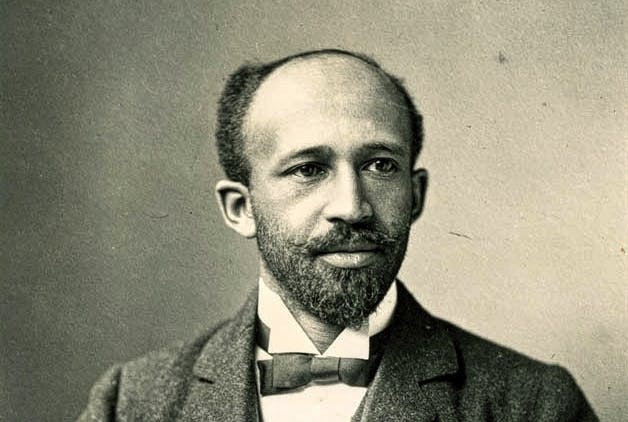The Double Bind of Blackness
Faulkner recognized what W.E.B. Du Bois and Frantz Fanon wrote about as an everyday reality for themselves and people of color as they protested the color line that equated being Black with inferiority.

‘The Rebel’s Clinic: The Revolutionary Lives of Frantz Fanon’
By Adam Shatz
Farrar, Straus and Giroux, 464 pages
‘Forging Freedom in W.E.B. Dubois’s Twilight Years: No Deed But Memory’
Edited by Phillip Luke Sinitiere
University Press of Mississippi, 274 pages
On April 17, 1956, William Faulkner sent a telegram to W.E.B. Du Bois declining to debate desegregation in Mississippi, saying they were on the same side morally, legally, and ethically. If Du Bois did not endorse Faulkner’s plea for “moderation and patience” as the practical position, then they would be wasting their breaths in debate.
Absent from Faulkner’s telegram is a consideration of the “double consciousness” that Du Bois, sociologist and historian, defined in “The Souls of Black Folk” (1903) — a double bind that Joe Christmas tries to escape in Faulkner’s novel “Light in August” (1932). Christmas does not know whether he is Black or white, but he so rejects the characterization of himself as Black, regarding it as an existential threat, that he murders his white lover, Joanna Burden.
What Christmas resists is the Black propensity to see the self in terms of what white supremacy defines as Black. This is the “double consciousness” that Du Bois articulated and that Fanon, a psychiatrist and political philosopher, picked up from Sartre’s “Anti-Semite and Jew,” which Mr. Shatz traces back to Du Bois: “this sense of always looking at one’s self through the eyes of others, of measuring one’s soul by the tape of a world that looks on in amused contempt and pity.”
In the 1950s, on trips abroad sponsored by the Department of State, Faulkner became keenly aware of the double consciousness that racism created. He acknowledged that the world was more Black than white, and in so doing recognized what Du Bois and Fanon wrote about as an everyday reality for themselves and people of color as they protested the color line that equated being Black with inferiority.
It is fascinating to compare the different lives and generations of Du Bois (1868-1963) and Fanon (1925-1961), both of whom rejected narrow nationalism and capitalism, seeking in democratic socialism and then in Communism and liberation movements the only way out of white colonial hegemony that suppressed Black people.
Both Du Bois and Fanon were educated in the Western tradition, and believed that its contradictions had to be surmounted in a sort of Hegelian/Marxist synthesis — though the route to a better world involved, in Fanon’s case, an advocacy of violence that inspired Black Power movements.
Both Du Bois and Fanon ended up in Africa — Du Bois in Ghana and Fanon in Algeria — though Fanon died in a Maryland hospital, ironically brought there by the CIA in what Fanon called “the country of lynchers” in an incongruity worthy of Faulkner’s fiction.
Why did the CIA try to save Fanon’s life? To “ensure that Algeria didn’t fall under Moscow’s influence,” Mr. Shatz writes: “The Americans … were keen to demonstrate their good intentions to its future rulers.” This was a Cold War world, in which the state department had sent Faulkner abroad in a spirit of reconciliation with other nations in the kind of propitiating project that Du Bois and Frantz Fanon scorned.
Faulkner remained part of the unreconstructed America that Du Bois attacked in his book, “Black Reconstruction,” (1935) pointing out, as Lisa J. McLeod explains in “Forging Freedom,” that “allowing former Confederates to recapture political as well as economic power meant leaving formerly enslaved Black Americans to a veritable hell on earth, but most white liberals, including [Andrew] Johnson, were willing to sacrifice Black Americans in service to ‘national reconciliation’ — an exchange that makes sense only if they conceived of the nation as white.”
Du Bois and Fanon remained unreconciled because of their resistance to a reconstruction of the world that had so far been imagined only in white terms. On December 3, 1961, just as Fanon’s most famous book, “The Wretched of the Earth,” was published, he wrote to an Algerian friend: “What shocks me here in this bed, as I grow weaker is not that I’m dying, but that I’m dying in Washington of leukemia when I could have died in battle with the enemy three months ago.”
Mr. Rollyson is the author of “American Biography” and “William Faulkner Day by Day.”

